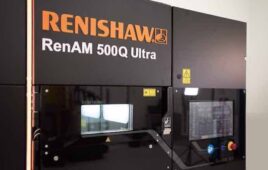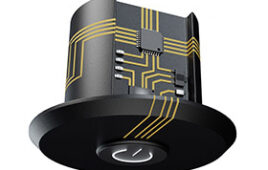Guns and weaponry are a hot topic for debate among many. Whether it be tragic school shootings or other senseless violence, gun use has divided our country. There are those who question, “How do people get ahold of these weapons?” or “Were they licensed to carry?” and even, “Did they get a background check before they purchased the weapon?” Fear continues to spread as the implementation of 3D weaponry becomes more readily available.
In 2018, the government was faced with the issue of whether or not 3D printing guns was lawful. There would be no paperwork to track the weapons, nor background checks for those printing the guns. 3D-printed firearms that are virtually untraceable with no serial numbers are most widely referred to as ‘Ghost Guns.’
As it stands, the average desktop 3D printer isn’t capable of creating high-quality firearms manufactured in someone’s basement. But it does leave room for future technology to come in and fill the gap. As 3D metal printing becomes more affordable and widely used, it has the potential to lead to higher quality weapons with no trace.
Some people find an issue in the creation of the weapon itself, while others fear the growth of untraceable weapons within the country. Then there are those like Jeremy Straub from North Dakota State University that believe people who print and attempt to use 3D-printed firearms are actually at more risk than their target.
Straub says, “As someone who uses 3D printing his work and researches quality assurance technologies, I’ve had the opportunity to see numerous printing defects and analyze what causes them. The problem is not with the concept of 3D printing, but with the exact process followed to create a specific item. Consumer 3D printers don’t always create high-quality items, and regular people aren’t likely to engage in rigorous quality assurance testing before using a 3D-printed firearm.”
Tony Bernardo, executive director of the Canadian Shooting Sports Association, says, “You’re not talking about making a real gun. You’re talking about making something that might go five shots without blowing up in your hand.”
The problem with 3D printers is that they can experience a wide variety of glitches, which result in item defects. As an item is printing, it’s difficult to discern if there is a flaw as the plastic is either too hot or too cold to get a firm reading. Even with everything set perfectly on a 3D printer, consumers have found that, particularly at home, flaws and defects are frequent.
With commercially built firearms, the guns are double checked for proper design through rigorous examinations. While some defects may still occur, they are much less than their printed counterparts. Home printing was not meant to design and then later produce the level of quality necessary for weapon production: which makes them utterly dangerous.
3D printing items is normally quite safe. Company’s around the country use 3D printing when dealing with models, miniatures, medical devices, prosthetics, and even hearing aids. But again, these products are then subjected to rigorous examinations for defaults. Something a home printer may not know to look for, especially in a printed weapon.
In the future, technology may aid in monitoring the printing process as well as assess the resulting model. For now, the average home printer does not possess the technical skills to design or perform necessary testing on what they print. While printing a gun might be a red flag to many, experts are confident that until more sophisticated machinery is developed, whatever item is made isn’t guaranteed to be safe or fulfill its intended function.
Filed Under: 3D printing • additive • stereolithography, Industrial automation




